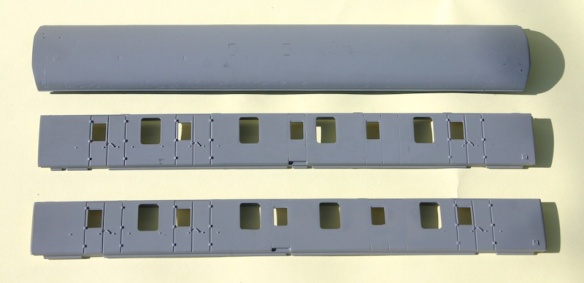This latest Mark 1 from Bachmann has been a long time coming – but at face value it certainly looks worth it.

First from the range of sleeping cars to reach the shelves, this model of a Mark 1 second class sleeper continues the company’s push to add further and more accurate detail onto there rolling stock.

By far the biggest change recently to the new Mk1’s and continued here has been the moulding of the bodysides integral with the ends – it may sound like no big deal but with the previously separate sides and ends it was difficult to hide the join between the two. In addition this change also allowed the removal of two moulded extensions, which don’t appear on the real thing but which partly held the models roof on.
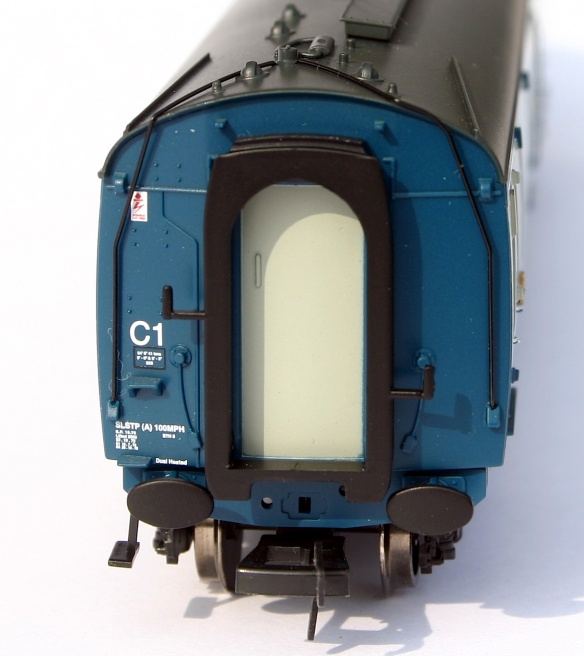
Continued (though not everyones choice) is a roof without any visible joins – far better to add them if you choose to, than have the previous representations that what would scale up to be rather large ribs running across the roof.

So what exactly has been modelled and how accurately?
Historical Setting
The Mk1 Sleeper Seconds (SLSTP) to Diagram 10 were constructed between 1957 and 1963 in 10 Lots, 4 Lots comprising 74 vehicles by Doncaster Works, 1 Lot of 5 vehicles by the private builder Metropolitan-Cammell and 5 Lots comprising 113 vehicles by Wolverton Works. All in a total of 192 vehicles numbered 2500-2691. As built, the Doncaster and Met-Camm vehicles (2500-2578) were equipped with BR Bogies and all of the Wolverton builds with Commonwealth bogies.
Vehicle Numbering and Livery
Bachmann have used the vehicle number E 2575 fixing it as an SLSTP from within Lot No. 30491 – a batch of 5 (2574-2578) built by Met-Camm with BR Bogies in 1959 and first allocated to the Western Region. (Although still allocated to the Western in 1969, 2575 was subsequently re-allocated to the Eastern before the end of 1975). Finished in blue & grey all of the livery elements appear to be correctly placed – certainly the lettering and lining are to Bachmann’s usual high standard and represent a vehicle from around 1970 onwards when the Inter-City Sleeper branding appeared. Judicious use of magnifying glass on the vehicle end shows minute and readable details such as the vehicle classified repair history
Bogies
Whilst the Commonwealth bogies remained under the vehicles from when they were built until they were withdrawn, all (perhaps with the odd exception through withdrawl) originally equipped with BR bogies had them replaced with B5’s between approximately 1965 and 1969.
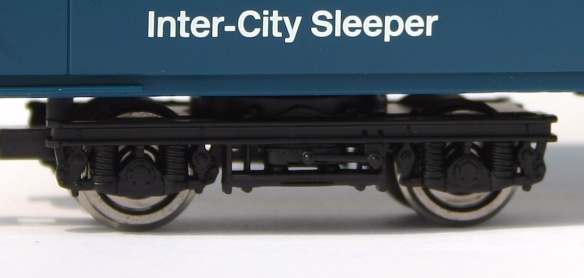
As supplied the Bachmann model comes with the similar B4 bogie – maybe quite incorrect to the coaching stock connoisseurs (the B5’s having a different spring plank and square section traction rods) but could be easily replaced with replacement B5 sides from the likes of Southern Pride Models should it be necessary
Bodylights
How much attention has been given to producing these accurately can be seen with the bodylights. The clearlight height of the bodylights (the maximum height in clear or obscure glass) differs from one side to the other, whilst the clearlight width remains the same on both sides) Scaled down these should measure 7.3mm  x 11.5mm (h) on the berth side and 13.3mm (h) on the corridor side which is exactly how they are on the model. A point lost in the past on the previous Hornby Mk1 Sleeping Cars. If there’s one small criticism, it’s around the berth droplights. Each berth was equipped with droplights rather than the plain glass lower bodylights as modelled. The obvious effect is the loss of any representation of the droplight release bar (as modelled on the door droplights).
x 11.5mm (h) on the berth side and 13.3mm (h) on the corridor side which is exactly how they are on the model. A point lost in the past on the previous Hornby Mk1 Sleeping Cars. If there’s one small criticism, it’s around the berth droplights. Each berth was equipped with droplights rather than the plain glass lower bodylights as modelled. The obvious effect is the loss of any representation of the droplight release bar (as modelled on the door droplights).

Thermotank pressure ventilation and heating system
Bachmann appear to have succeeded in getting the size and look of the roof ducting correct with some daylight visible between the roof and the ducting. What is also good to see though is the inclusion of the modification made to the Thermotank heating system air intake on the vehicle end.
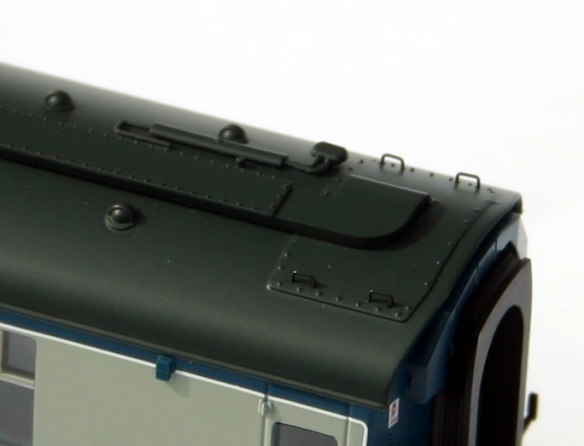
As built the air intake was just above the gangway faceplate on the vehicle end however by late 62′ the problem of exhaust fumes entering the system grew to the extent that the BTC aproved a trial of a re-positioned air intake as suggested by the Scottish Region. One of the vehicles from Lot 30735 (M2682-2691) was fitted for the trial, and sometime between April and June 1963 the modification was authorised for fitment to both New Build and existing sleeping cars.
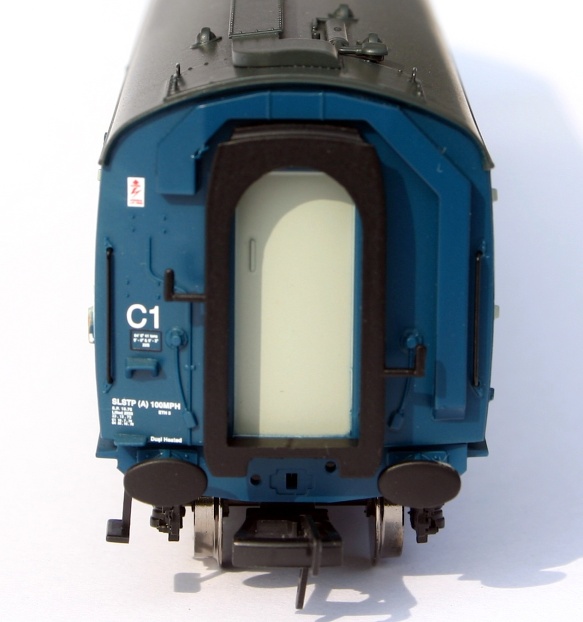
The modification consisted of re-routing the ducting down the body end as modelled. (The maroon version I believe will not have the ducting modification)
Interior Detail
Not a lot to see on a Sleeping Car – having of a course a solid partition without glazing on the corridor side which prevented seeing through from one side to the other so interior details without lighting was hard to see anyway. What can be seen though is the basic outline of the bottom bunk and the quarter round vanity/sink unit
 Brakes
Brakes
A large number of the Mk1 sleeping cars appear to have been built with compensated and equalised brakgear. On the real thing the key way of identifying this was the asymmetrical shape of the Brake Shaft vee hangers and the position of the brake cylinder which would be found between the vee hanger and the bogie.
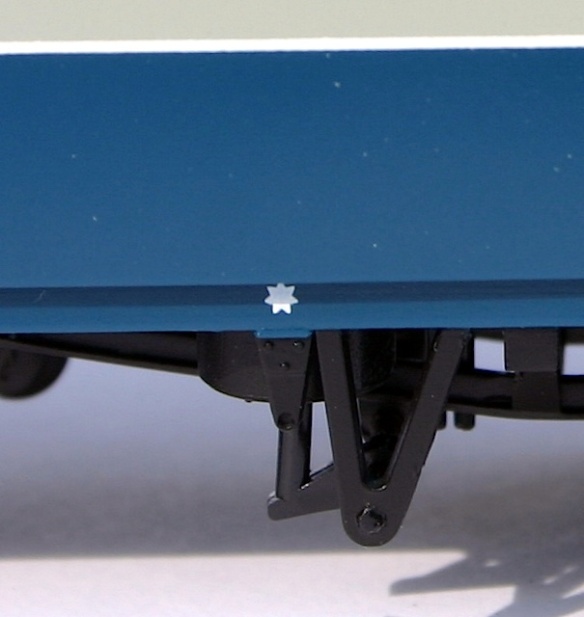
Bachmann have not missed this point, correctly positioning both. Note this applied whether the bogies fitted were BR, Commonwealth, or B5. They have however addressed an earlier problem where the brake shaft was shorter than the prototype arrangement. This has been corrected, with the shaft passing across to a bracket on the far side bottom longitudinal.
Underframe Equipment
Well detailed as usual – one small oddity though. The additional box required for Electric Train Heating equipped vehicles is correctly positioned below the solebar however as far as I can determine this particular vehicle was not fitted with Dual Heating, but remained steam heat only, and no ETH cables or sockets or fixed end boxes are modelled (despite the Dual Heated legend on the vehicle… One to watch or at least address if you are looking to model a specific vehicle.
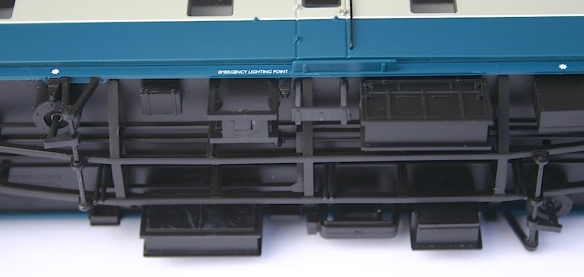
What was good to see was not only the inclusion of the usual Bachmann semi permanent coupling bars and dummy buckeye couplers but also vacuum and steam pipes for fitting to both ends, and also two small plastic fittings to represent the toilet flush pipes that are quite obvious on the prototype. I’ve not attempted to fit any of these fittings yet so no photo’s. One rather strange error – good to see the addition of the End steps hanging from the headstocks – pity something seems to have been lost in translation and have ended up looking rather odd!
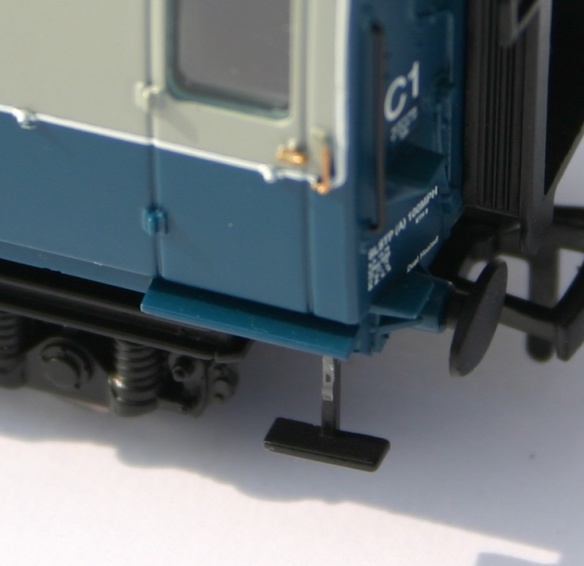
Overall verdict
I think they’ll speak for themselves. These are really good models – is everything 100% accurate – no, but that’s maybe an impossible goal and they are at least 75% of the way there. Good to see that Bachmann are not drawing up the detail vs cost shutters even in these tight times, and these will make a good basis for further improvement (more on that later)! That’s enough to be getting on with. I’ll need to spend some more time looking at these vehicles and how they can be further improved.
A Wee Biscuit?
Well, in the early 1970s a BR PR&PO advert for the then (Mk1) sleeping car services included an interview with the typical family – Maw, Paw & the Bairn. Recently arrived off an Anglo-Scot Sleeper the reporter asked what the highlight of the journey was. True to form the wee girl replied in turn and on cue in her best Glaswegian accent – “An ah got a wee biscuit” I presume the parents chose not to mention perhaps being put in berth over the top of the bogies or the grumpy Steward. Oh for the days of green BTH crockery!

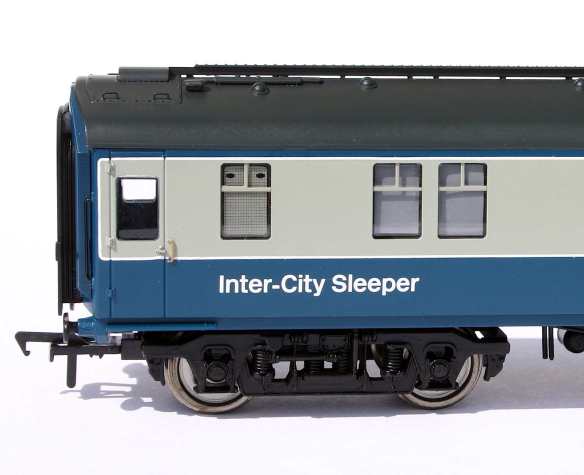
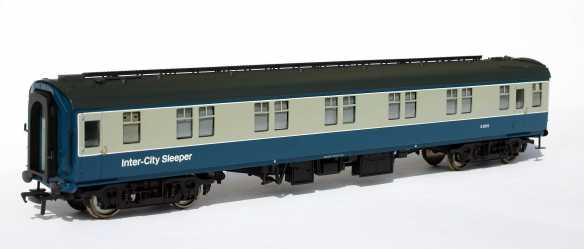












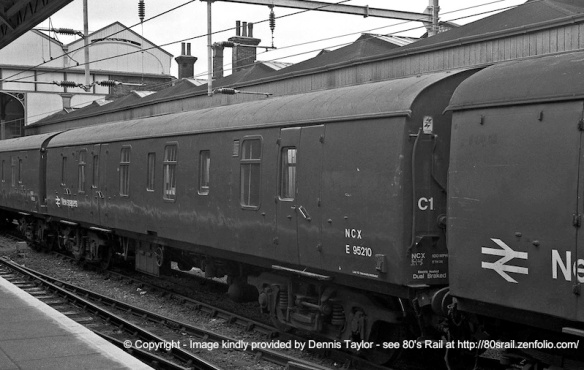

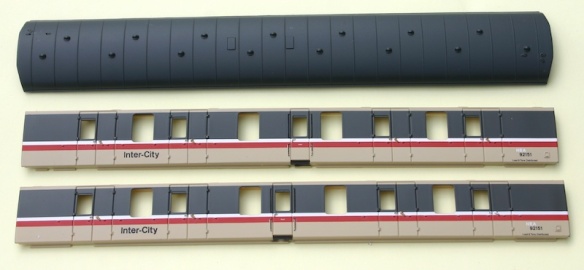 The most obvious changes are the removal (by sealing up and flushing over) of the former guards doors, and the the first set of double doors to the right of it on both sides. Also the removal of the rather oversize Bachmann ribs intended to represent the roof panel welds, and removal of the roof ventilators in line with the prototype.
The most obvious changes are the removal (by sealing up and flushing over) of the former guards doors, and the the first set of double doors to the right of it on both sides. Also the removal of the rather oversize Bachmann ribs intended to represent the roof panel welds, and removal of the roof ventilators in line with the prototype.